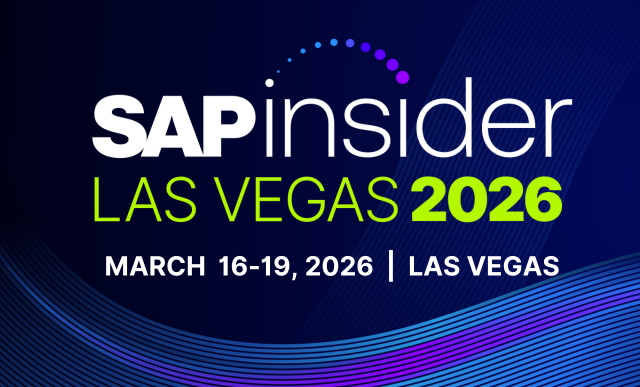SAP Architecture
Filter By
Browse By
- SAP Analytics and AI
- SAP Application Development and Integration
- All SAP Application Development and Integration
- SAP ABAP
- SAP ABAP Development Tools
- SAP ABAP Test Cockpit
- SAP API Management
- SAP BAPI
- SAP Basis
- SAP BRF
- SAP Business Application Studio
- SAP CMS
- SAP Design Studio
- SAP Development Tools
- SAP DevOps
- SAP EAI
- SAP EDI
- SAP Extension Suite
- SAP Fiori
- SAP Fiori Elements
- SAP Integration Suite
- SAP Low Code Application Development
- SAP Low Code Automation
- SAP Netweaver
- SAP Release Management
- SAP UI5
- SAP Web Application Server
- SAP Web IDE
- SAP Business Process Management
- SAP Center of Excellence
- SAP CIO
- SAP Customer Experience
- SAP Data and Data Management
- All SAP Data and Data Management
- SAP BW
- SAP BW/4HANA
- SAP Crystal Reports
- SAP Data Archiving
- SAP Data Center
- SAP Data Governance
- SAP Data Integration
- SAP Data Migration
- SAP Data Quality
- SAP Data Services
- SAP Data Strategy
- SAP Data Visualization
- SAP Data Warehouse Cloud
- SAP DMS
- SAP Document Control
- SAP EIM
- SAP ETL
- SAP ETL Tools
- SAP HANA
- SAP HANA Administration
- SAP HANA Deployment Infrastructure
- SAP HANA Studio
- SAP Master Data
- SAP Master Data Governance
- SAP MDM
- SAP Enterprise Architect
- SAP Enterprise Asset Management
- SAP ERP
- SAP Finance
- All SAP Finance
- SAP Accounting
- SAP AR AP
- SAP Asset Accounting
- SAP Billing Systems
- SAP BPC
- SAP BRIM
- SAP Cash Management
- SAP Central Finance
- SAP Controlling
- SAP COPA
- SAP Cost Center Accounting
- SAP Currency Risk
- SAP e-invoicing
- SAP FICO
- SAP Finance Automation
- SAP Advanced Financial Closing
- SAP Financial Consolidation
- SAP Financial Planning
- SAP FX Risk
- SAP General Ledger
- SAP Global Tax Management
- SAP Hyperion
- SAP Order to Cash
- SAP Payment Processing
- SAP Profitability Analysis
- SAP Rebate Management
- SAP S/4HANA Finance
- SAP SWIFT Compliance
- SAP Treasury Management
- SAP Universal Journal
- SAP Governance Risk and Compliance
- SAP Human Capital Management
- SAP Intelligent Technologies
- SAP Platform and Technology
- All SAP Platform and Technology
- SAP Business Technology Platform
- SAP Cloud
- SAP Cloud Connector
- SAP Cloud Integration Platform
- SAP Cloud Migration
- SAP Cloud Platform
- SAP Cloud Providers
- SAP Cloud Strategy
- SAP Digital Signature
- SAP Container Platform
- SAP HANA Enterprise Cloud
- SAP Digital Asset Management
- SAP Smart Forms
- SAP HEC
- SAP Digital Integration Hub
- SAP Hyperscalers
- SAP Infrastructure
- SAP Messaging
- SAP Quality and Testing
- SAP Security
- SAP Spend Management
- SAP Supply Chain Management
- All SAP Supply Chain Management
- SAP APO
- SAP Asset Management
- SAP Business Network
- SAP Digital Manufacturing Cloud
- SAP Digital Twin
- SAP EWM
- SAP IBP
- SAP Inventory Management
- SAP Label Printing
- SAP Logistics
- SAP Manufacturing
- SAP Manufacturing Automation
- SAP MES
- SAP MII
- SAP MM
- SAP MRO
- SAP MRP
- SAP Order Management
- SAP Plant Maintenance
- SAP PLM
- SAP Production Planning
- SAP S&OP
- SAP SD
- SAP SPM
- SAP Supply Chain Planning
- SAP Track and Trace
- SAP Transportation Management
- SAP System Administration
What is SAP Architecture?
SAP Architecture is the technical requirements of your system landscape and the applications that you need for that. SAP’s major step forward in architecture came when it introduced SAP R/3 — the three references a three-layer architecture — in the late 1990s. SAP ERP applications ever since, including SAP S/4HANA, still follow these basic architectural layers:
- The Presentation Layer is the component specialized in interacting with end-users, the user interface. SAP GUI is the traditional SAP interface, but newer SAP applications utilize SAP Fiori design principles.
- The Application Layer is the component that specializes in processing the SAP application — such as SAP S/4HANA. Development at the SAP application layer has been done traditionally with the ABAP coding language. The HTML5-based UI5 is growing in importance as a language for building applications that can run on a variety of devices.
- The Database Layer is the software component that specializes in the management, storage, and retrieval of data. The key difference in SAP S/4HANA vs. previous ERPs at this level is a simplified data model that is specifically designed to run on the SAP HANA in-memory database.
What is SAP Architecture?
SAP Architecture is the technical requirements of your system landscape and the applications that you need for that. SAP’s major step forward in architecture came when it introduced SAP R/3 — the three references a three-layer architecture — in the late 1990s. SAP ERP applications ever since, including SAP S/4HANA, still follow these basic architectural layers:
- The Presentation Layer is the component specialized in interacting with end-users, the user interface. SAP GUI is the traditional SAP interface, but newer SAP applications utilize SAP Fiori design principles.
- The Application Layer is the component that specializes in processing the SAP application — such as SAP S/4HANA. Development at the SAP application layer has been done traditionally with the ABAP coding language. The HTML5-based UI5 is growing in importance as a language for building applications that can run on a variety of devices.
- The Database Layer is the software component that specializes in the management, storage, and retrieval of data. The key difference in SAP S/4HANA vs. previous ERPs at this level is a simplified data model that is specifically designed to run on the SAP HANA in-memory database.
There’s a wide range of vendors that support at least part of the SAP Architecture. Red Hat and SUSE specialize in the Linux operating system, on which the SAP HANA database runs. SAP architecture needs a foundation, and a vendor such as Dell Technologies can provide on-premise hardware such as servers. Microsoft is one of the hyperscalers that can set up cloud environments for SAP applications. Companies like Deloitte offer consulting services to assist companies in building out their SAP Architecture.
Key Considerations for SAPinsiders:
- ABAP coders are still important to SAP Architecture. If your company is looking to adopt SAP S/4HANA and other SAP applications with consumer-grade user experiences, then you will likely need UI5 and SAP Fiori skillsets.
- Legacy SAP ERP systems typically have heavy customization at the application layer and potentially complex data models. Many customers that are adopting SAP S/4HANA are choosing to eschew customization and instead are adapting their processes to the technology to provide cleaner data and easier upgrades.
- SAP HANA’s in-memory capabilities are meant to speed up data retrieval significantly. However, with the rise of low-cost and open-source data storage, many companies are storing their data in “hot” and “cold” locations. Hot, or frequently accessed, data may be stored in-memory, but cold, or sporadically accessed, data may be stored in a Hadoop Distributed File System (HDFS) or cloud storage.
485 results
-

- SAP Workloads
 Premium
Premium
Get Started with Cloud Computing and SAP Today
Reading time: 18 mins
Thinking about cloud computing? Not sure how to get started? Discover the different types of cloud computing models with a focus on Infrastructure as a Service. Included are immediate SAP use cases for applying cloud technology, SAP-specific challenges and support considerations, and guidelines for building your own hybrid cloud. Key Concept Infrastructure as a Service...…
-

 Premium
Premium
Configure SAP BusinessObjects Planning and Consolidation for SAP NetWeaver to Optimize System Performance
Reading time: 29 mins
Read about the underlying architecture for SAP BusinessObjects Planning and Consolidation 7.0, version for SAP NetWeaver. Learn how to set up the connectivity between the different SAP BusinessObjects Planning and Consolidation clients and servers, and how to change different ABAP and .NET settings to optimize system performance. Key Concept The term application has several meanings...…
-

 Premium
Premium
Are Your Skills Up to Date for the Age of SAP HANA?
Reading time: 18 mins
/HANASAP’s recent innovations, including SAP HANA, are likely to cause a skills gap in the SAP community going forward. Experts trained on classical ERP or analytics systems don’t necessarily have the right skills for the future. Get a first-hand look at some of the new skills that you need to successfully embrace the change. Learn...…
-
-

- SAP Business Application Studio
 Premium
Premium
Take a Serious Look at the “A” in SOA and Gain Flexible, Adaptable Architecture
Reading time: 24 mins
Understand what the ideal architecture for an enterprise-ready composite application should look like. Discover the pitfalls involved, how to avoid them, and how your decisions influence the overall complexity of the final application. By following these recommendations, you can develop applications that are well prepared for your always-changing IT landscape. Key Concept The basic idea...…
-

 Premium
Premium
Entertainment Industry Pricing and Pricing Architecture in SAP CRM-IPM 7.0 with Enhancement Package 1
Reading time: 20 mins
Learn about commonly used entertainment industry pricing models, SAP CRM-IPM pricing architecture, and royalty scopes. See how they support pricing calculations and user data entry, and discover potential gaps that you might encounter in the media industry, especially with television companies. Key Concept The entertainment industry has unique needs involved in pricing licenses sale contracts...…
-

- SAP BI Tools
 Premium
Premium
An Introduction to SAP Predictive Analytics 2.0 and SAP HANA Predictive Tools
Reading time: 64 mins
In this exclusive report by Hillary Bliss, take a walk into the world of the SAP suite of predictive tools with an in-depth tour of the new SAP Predictive Analytics 2.0 and how it ties into SAP HANA and SAP Lumira. Learn the importance of general predictive modeling concepts, and then apply those concepts as...…
-

- SAP BI Tools
 Premium
Premium
An Introduction to SAP Predictive Analysis and How It Integrates with SAP HANA
Reading time: 57 mins
In this exclusive report, take a walk into the world of SAP Predictive Analysis and how it ties into SAP HANA and SAP Lumira (formerly known as SAP Visual Intelligence). Learn the importance of general predictive modeling concepts, and then apply those concepts as part of a bigger discussion about the architecture and features of...…
-
-

- SAP Netweaver
 Premium
Premium
How a Mediation Engine Prepares and Connects Data Among Multiple Applications on the SAP NetWeaver Platform
Reading time: 22 mins
With wireless communication and mobility applications growing, telecommunication billing systems have to process a large volume of data in a near-real-time manner. The billing system is among the critical components in a telecommunication company’s IT landscape, so a high-performance mediation engine, providing high availability, data integrity, and system throughput, is critical. Learn about the architecture...…
-

A New Development Platform for Native SAP HANA Applications
Reading time: 16 mins
Developers have several options for developing applications and business content on SAP HANA, such as the ABAP 7.5 stack and the analytics applications supported by SAP Business Warehouse (SAP BW) powered by SAP HANA. But if you’re looking to move beyond dashboard scenarios and don’t want to base that development on SAP NetWeaver stacks, your…
-

Leveraging Enterprise Architecture to Enable Sustainability
Click Here to View the Session Deck In an era marked by increasing environmental challenges and global consciousness about sustainability, organizations are reevaluating their operations and strategies. Enterprise Architecture (EA), traditionally known for optimizing business processes and technology, is now stepping into a new role as a catalyst for sustainability. This session will explore the...…
Become a Member
Unlimited access to thousands of resources for SAP-specific expertise that can only be found here.
Become a Partner
Access exclusive SAP insights, expert marketing strategies, and high-value services including research reports, webinars, and buyers' guides, all designed to boost your campaign ROI by up to 50% within the SAP ecosystem.
Upcoming Events
Related Vendors
Your request has been successfully sent


